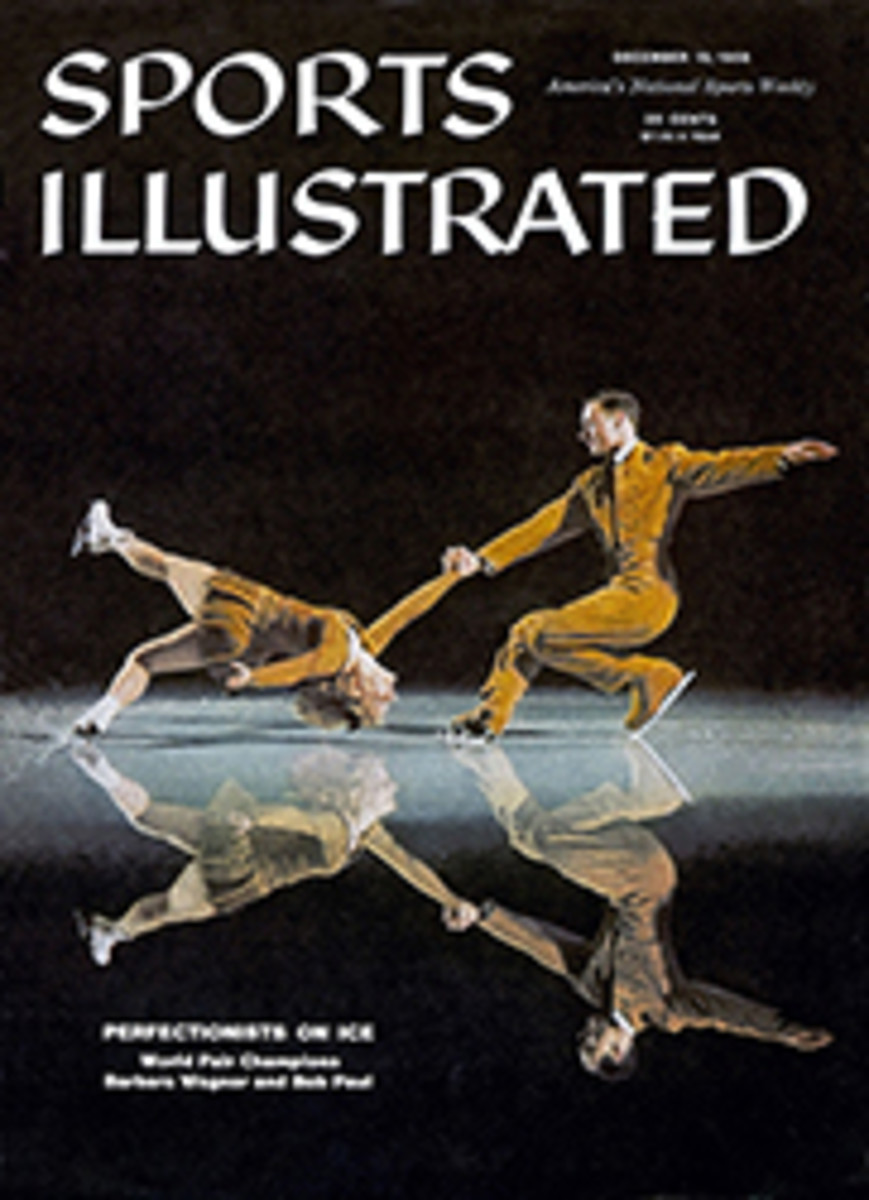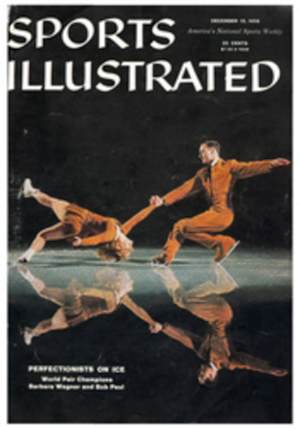
Schoolbells for a Pro
Next to sending Ted Williams to a batting clinic for a little brush-up on technique, a requirement that forced one of the world's leading skiers to pass an examination proving that he could ski would seem to be one of the truly superfluous ideas in the world of sport. Yet, ridiculous or not, that is precisely what happened to Stein Eriksen, the flamboyant Norwegian who in 1954 was World Ski Champion and was called the greatest Alpine skier in the world.
But rules are rules, especially when the United States Forest Service makes them, and maybe in this case they aren't so bad. Eriksen was going to run the ski school at Aspen Highlands in Colorado this year. Since the Highlands are partly on Forest Service preserves, the Rangers have a say in what happens there, and it was their opinion that Eriksen would have to be certified as a ski instructor, just as everyone else who hoped to teach skiing in Colorado.
While in the case of Eriksen this might seem like chauvinism gone rampant, the Forest Service stand makes good sense. Just 20 years ago American skiing was an esoteric sport that boasted a few experts and not many more enthusiastic neophytes. Today there are 4 million Americans who ski, and they ski, on the average, better than the Swiss who have the advantage of tradition and natural terrain. This spectacular rise in performance can be traced directly to the quality of American ski instruction.
The Forest Service, of course, has had nothing to do with this. The backbone of U.S. teaching is a system based on instructor certification schools which are conducted by the regional instructors' associations (there are six) of the National Ski Association. All skiers, to qualify as instructors, must pass an exacting series of tests, thereby proving two things about themselves: first, that they know how to ski and second, that they are able to pass their knowledge on to those who don't.
The system has worked so well that even in the case of Eriksen the Southern Rocky Mountain Ski Association, which counts the peaks around Aspen as part of its extensive domain, was no more disposed to waiving its requirements than the Forest Service had been. Eriksen, ski medals and all, would have to appear before the Certified Instructors Association of the SRMSA and prove that he could teach up to their standards.
So last season at Arapahoe Basin Ski area in Colorado, where SRMSA exams are usually held in late spring, Eriksen went back to school. His teacher: Willy Schaeffler, who in any year is one of the region's chief examiners. Schaeffler, if he needs any introduction, is Ski Coach for Denver University. He also heads the Arapahoe Basin Ski School, is in charge of all ski race preparations at Squaw Valley for the 1960 Olympics and is the author of SPORTS ILLUSTRATED's series of articles on the Austrian short-swing (Dec. 16 & 23, 1957).
At Arapahoe, Schaeffler's usual task is to examine new instructors who have been teaching on a trial basis, or, as with Eriksen, candidates who have come from other states where not all instructors are certified. Schaeffler has plenty of company in his work: George Engel, head of Winter Park ski school, Ernie Blake of Taos, New Mexico; Max Dercum of Arapahoe, and from Aspen Ski School, Co-Director Friedl Pfeifer, plus Robert Craig, Sandy Sabatini, Maurie Shepheard and practically every other top instructor in the region.
As it turned out, Eriksen took most of his examinations in Schaeffler's classes. Just to make everything beautifully clear, Schaeffler talked to Eriksen ahead of time and gave him a semiserious warning that Eriksen had better be sure of his fundamentals. "I think I got him a little worried," Schaeffler confided before the sessions began.
There is no doubt that Eriksen worked on the tests. When time for the first tests began, he mushed in line with the rest of Schaeffler's class and headed for one of the peaks just above the upper end of Arapahoe's highest lift. Schaeffler swung along in the lead, lecturing on the surrounding mountains as he went. "Mt. Albert," he said at one point, indicating a peak in the west. "An instructor should know the country. That's part of the appreciation of skiing." On top, Schaeffler said, "Now we go down. First we ask ourselves, 'Where can we have a little fun?' "
Schaeffler's idea of fun was a lilting drop over a cornice (he tested it first to make sure it wouldn't avalanche) down a mirror-glass wall into a gully and up the opposite side. There he used his momentum to spring into the air, turning as he flew so that he came down running parallel to a boulder field that ranged across the crest like a little Stonehenge. Eriksen and the others followed. Eriksen went easily. Some of the others went a bit uneasily.
Schaeffler then set off down through a field of heavy, crusty snow called "crud" in ski parlance. He passed through it flawlessly, followed by some of the other examiners in the group. At the bottom they all whipped out score cards, and Schaeffler waved the first candidate down. Some made it standing and others did not. Eriksen came through with Examiner George Engel skiing alongside, watching closely. Something in Eriksen's style makes even a dashing skier look fairly pedestrian, especially when Eriksen breaks into free-swinging "mambo turns" to show how easy the going really is.
"Skiing next to Stein," said Engel afterward, mopping his brow, "makes you want to crawl around to the back side of the mountain and come down on your hands and knees."
Next on the menu was a ride down the mean little drop known as The Standard. Snow started to come in that day, and in the flat, gray light, The Standard, with its rugged bumps all the way down, was a rather cheerless-looking half-mile stretch.
The instructors skidded manfully in Schaeffler's wake, trying to show form as best they could under the conditions. Eriksen skied down almost regally indifferent to poor light and bad bumps. Some instructors looked like instructors, but there were others whose descent would have warmed the heart of every skier who has ever floundered under his teacher's mocking eye. There were some real crash-and-burn nose dives.
That was the end of the free-skiing, or, how-well-do-you-ski?, examination. Now it was time for the how-well-can-you-teach? phase.
On succeeding days the examiners manned demonstration stations. At Station One the candidates were to show the proper way to teach walking, and at Station Two, the proper way to teach the snowplow—and so on. This phase was the one in which the certification people expected that Eriksen might have trouble.
In the first place, the matter of proper teaching method is a bit complicated these days. Each ski school has its own variation of the magic needed to bring a nonskier safely into the slippery world of snow.
THE SYSTEM'S THE THING
At Arapahoe, each instructor had to show he possessed a consistent system in which the basic steps lead logically into the advanced turns. Since Eriksen is well known as an advocate of a sort of "delayed shoulder" turning not yet practiced in the southern Rockies, it remained to be seen whether he could convince the examiners that he had a logical and orderly progression of teaching tactics. Eriksen's case was complicated by the fact that his personal style carries the reverse shoulder to a point beyond the abilities of a mere expert. The examiners were half-prepared for some serious omissions on the lower end of Stem's teaching method.
To almost everyone's surprise, Eriksen demonstrated an orthodox series of steps beginning with the snowplow and introducing the delayed shoulder only at the late stages of the teaching. All the way down the mountain Eriksen gave clear and careful explanations of each step. He also showed that he was a good teacher—that he liked an audience and could give a good show.
A small knot of recreational skiers trailed reverently behind Eriksen to admire every move he made, and the examiners had to admit that he had a clean method and could demonstrate well. If summa cum laude had been awarded, Eriksen would have won the degree. In fact, about the only person who was unhappy with his performance was a candidate, a girl, who had to follow through the examination stations. "What an act to have to follow," she muttered as she watched him go.

